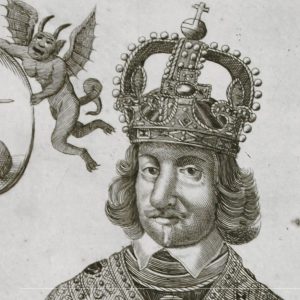We will be building our bank of lesson plans in preparation for the 2016-17 school year. We would also love to use Stuarts Online to share lesson plans and other resources successfully developed by other people teaching the Stuarts, so please do contact us.
How successful was Charles in the ‘final battle of the Civil War’: The battle for his reputation?
KS3; GCSE
This is the first lesson of a two-part enquiry, ideally taught in two stages separated by work on the Interregnum, dealing with Cromwell’s actions and the various attempts to establish an effective political system. The enquiry begins by examining the way in which Charles I quite deliberately sought to present himself, though his trial and execution, not merely as the rightful king but as a martyr and asks how effective this portrayal was… Read more >>
Would Cromwell have approved of the way in which his image was presented after his death?
KS3; GCSE
This is the second lesson of a two-part enquiry, ideally taught in two stages separated by work on the Interregnum, dealing with Cromwell’s actions and the various attempts to establish an effective political system. The enquiry contrasts Charles’ tightly managed presentation of his reputation with the more much more ambiguous images of Cromwell that circulated after the latter’s death, asking why his reputation proved so much harder to defend… Read more >>
How rapturous was the reception that Charles II received in London?
KS3; GCSE; A-Level
This is a single lesson that could either be used as an introduction to Restoration England, or in completing a study of the Civil War and Commonwealth period allowing students to assess how warmly Charles II was welcomed as king. Where students are already familiar within the Civil Wars and abolition of the monarchy, the enquiry seeks to consolidate this knowledge by encouraging students to speculate about the image that Charles would wish to present and then to examine and explain how these messages were conveyed and how they were received, drawing inferences from a range of sources. It alerts students to the variety of opinions in England – helping them to appreciate both the strength of the celebration and the anxiety… Read more >>
What does the arrival of Catherine of Braganza tell us about Restoration England?
KS3; GCSE; A-Level
This is a single lesson enquiry to be used as an introduction to Restoration England. It is intended to encourage students to draw inferences from some basic factual information and a small number of original sources, inviting them to establish a number of hypotheses that they develop and refine as they gain more information. By asking about how the life of the queen consort (rather than the king) can illuminate the period, it may prompt students to take a broader view of political history, recognising the range of sources from which we can learn, as well as acknowledging other aspects of the past (particularly… Read more >>
What can people’s plates tell us about their politics?
KS3
This is a single lesson enquiry that uses everyday objects and apparently simple images to introduce the essentially extraordinary diversion of the Stuart line of succession from James II’s son to his elder daughter, Mary and her husband, William. It is intended to prompt students’ curiosity about why this happened and why there was support for it. The enquiry focuses on the use of artefacts as sources of evidence, looking both at the meaning of the images – how we can work out what the plates are actually saying – and at what we can infer from other knowledge about the manufacture and sale of these items to tell us about the kind of people who bought them and why they did so. It explores how quite simple images were… Read more >>
How do we choose the focus for our films?
KS3; GCSE; A-Level
This enquiry is intended to help students to review a particular theme or period identifying the kinds of criteria that it would be appropriate to use in selecting particular historical events for different purposes and to make judgments in line with those criteria. It is intended to promote thinking both about the criteria that are used to judge historical significance and about the facts that as our criteria or our vantage points change, so these changes will affect the decisions that we make. Historical significance is not a fixed property of any particular event (or text or image or object) – it is a construction… Read more >>
How can I best explain this to you?
KS3; GCSE; A-Level
This is essentially a suggestion for a revision activity that provides an alternative to practice essays. Its intention is to help students to think about how an explanation or argument has been constructed and how it is supported by the use of particular sources. It is perhaps most feasible to use with A-level students, but the essential idea of creating a short explanation of a key event – its causes, consequences and significance – or analysing the meaning and significance of a particular text (or image) could be adapted for GCSE or A-even Key Stage 3… Read more >>










